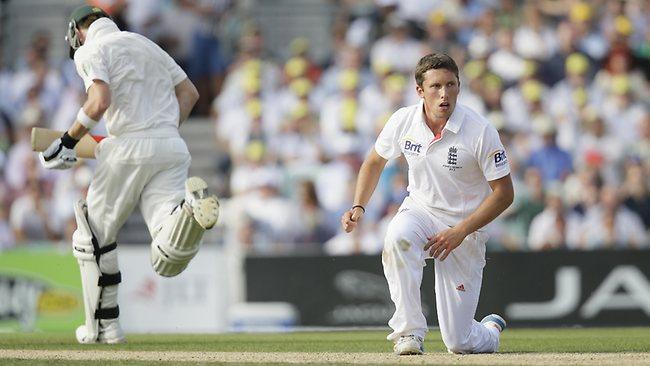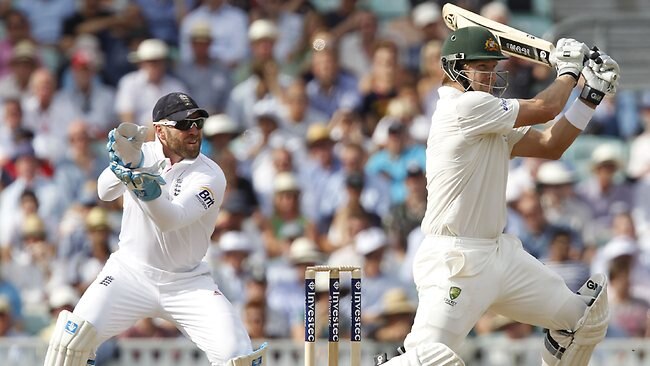New boys sacrificed at altar of continuity as England plan for future
THE decision to blood Simon Kerrigan and Chris Woakes backfires as 'secret weapons' hit the self-destruct button.

THE decision to blood Simon Kerrigan and Chris Woakes backfires as 'secret weapons' hit the self-destruct button.
Ultimately, the idea of running a sports team is to create a thousand-year Reich: a team who beat everybody and win everything and do so again and again and again, year after year after year. Manchester United got pretty close under Sir Alex Ferguson.
It's the transitions that are so difficult, of course, but then transitions were Ferguson's greatest talent. One great team remorselessly gave way to another. Now they are making a transition of leadership and the world watches David Moyes to see if he can keep the empire on track now that Ferguson has gone.
The problem of transition haunts every team who achieve a degree of excellence. We have seen it in cricket twice in the past 30 years or so. First there was the unbeatable West Indies team under Clive Lloyd and Viv Richards, then the arguably still better - certainly more versatile - Australia team under Mark Taylor and Steve Waugh. Both were undone by the same problem: the inability to find continuity. It's the contradiction of excellence. If a group of players are too good to drop, you are stuck with them until they retire; if they all retire at once, you forfeit continuity.
You have to start all over again with people who, by definition, lack experience. West Indies have never recovered; Australia are trying to and, so far, failing.
No danger of England falling into that trap. This is the match in which England set out their stall and demonstrated their belief in the importance of continuity. They could have struck with the tried and tested but no, they brought in not one but two new boys, thereby ensuring that the stream of talent will never be dammed.
Oddly, England are doing this without doing the decade-of-dominance bit first. Certainly, they have achieved some measure of excellence: they were the top Test side in the world for getting on for a year, until they had the misfortune to meet South Africa, and they have beaten Australia and India home and away.
This summer they have beaten Australia and retained the Ashes. Now, in the dead match at Kia Oval, they have given debuts to two players. There is just a hint of hubris in all this. To seek continuity and strength in depth is laudable, but shouldn't they be seeking world domination first?
So in came Chris Woakes and Simon Kerrigan: the secret weapons, tomorrow's answer today. The Aussie journos were forced into some hurried research.
Shane Watson was forced into some hurried runs. He has had a tough tour with the bat, at times close to a laughing stock. How nice of England to be so helpful in his rehab. He took quite a shine to these new boys. If he liked the look of Woakes, it was love at first sight when Kerrigan came on to bowl. Watson scored a total of 55 runs from the first seven overs the pair of them bowled, Kerrigan's slow left-armers following Woakes's brisker stuff.
Woakes was a little bruised; Kerrigan was marmalised. The spinner went through two overs of hell, conceding 28 runs, all of them to Watson. His length went to bits, he dragged everything down and Watson hit the last four balls of his spellette for four. I spoke to Mike Brearley during the tea interval - he's at the Oval to write for The Times - and I recalled a chapter heading from The Art of Captaincy: "My God, look what they've sent me".
It was a thrilling whim to go for two spinners, particularly as Swann has been one of the main differences between the two sides and it's not as if he needs help. It couldn't be Monty Panesar because his life is full of troubles and he is attempting some rehab of his own. Send for Kerrigan.
For some reason, left-arm spinners are peculiarly prone to the yips: a sudden and sometimes terminal inability to perform the basics of their craft. Sometimes full-bungers alternate with half-trackers, sometimes they bowl perpetual moon balls, sometimes their run-up goes haywire, sometimes they just can't let go of the ball. Kerrigan's second spell was perilously close to the yips. He included one head-high full toss; admittedly, Swann took a wicket in this series with just such a ball, but that was in the context of over after over of the highest quality. Not so here.
In his second brief spell, the crowd cheered every dot ball, not that they had that many opportunities. That left Alastair Cook with a bit of a basket case on his hands, someone he needed to ease through an over or two without destroying him for ever. Kerrigan came back for a third spell but, by this time, he had given up trying to spin it; he was just trying to look like a real bowler.
Was it nerves? Was it an attack of altitude sickness that can affect players in any sport when they step up a level? Or has he been found out as a player a notch or two below the required standard? For all Cook's tenderness, it looked more like the third yesterday.
Woakes suffered less on what was a batter's day, but it was a question of degree. He'd have been the weakest link had they not brought in poor Kerrigan. He looked competent, but competence ain't enough. He's pretty competent with the bat as well, apparently.
But come. Perhaps this experience - I believe "baptism of fire" is the correct phrase - will be the making of both of them and they will form the backbone of the England bowling attack for years to come, until they too make way in the perpetual search for continuity, and we will look back and praise the brilliant foresight shown by their selection.
It was a nutty professor day yesterday: "It zoundz crazy but I zink it just might vork." Only, er, it didn't. The thousand-year Reich will have to wait a bit.
The Times




